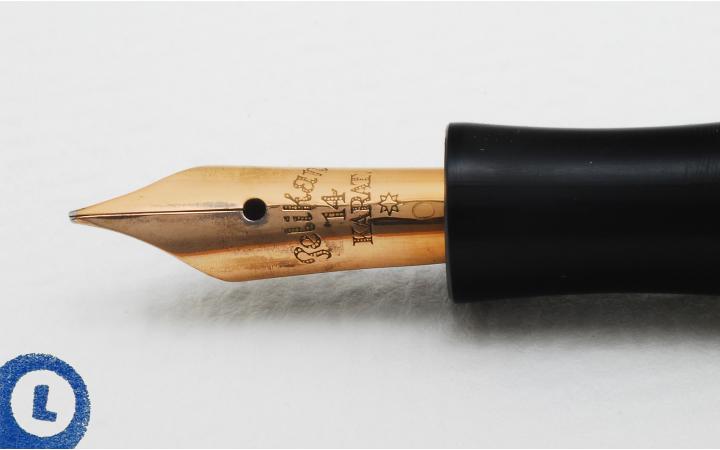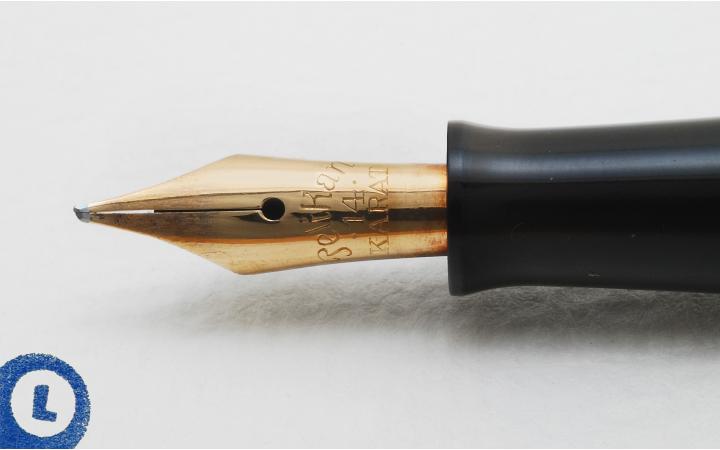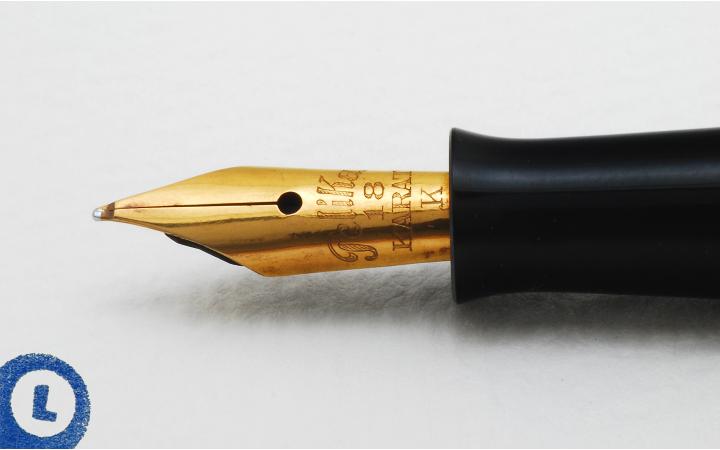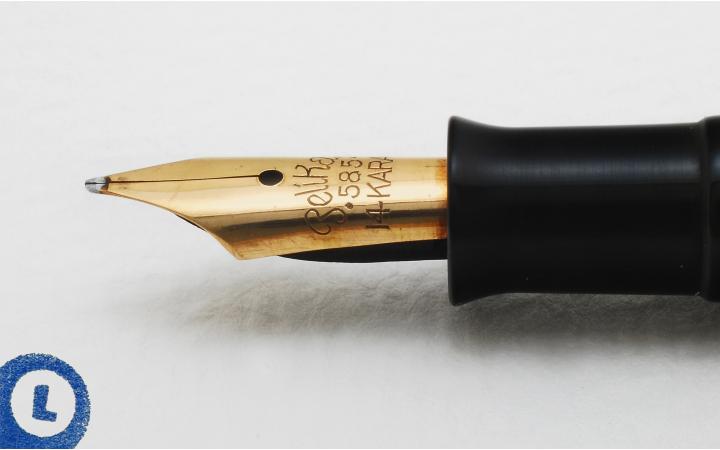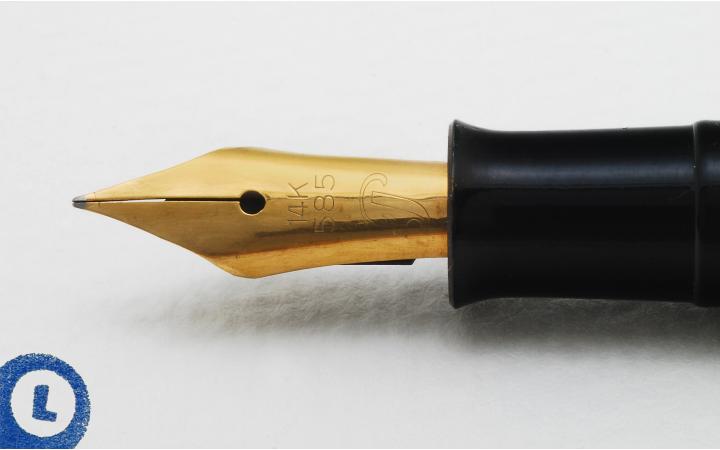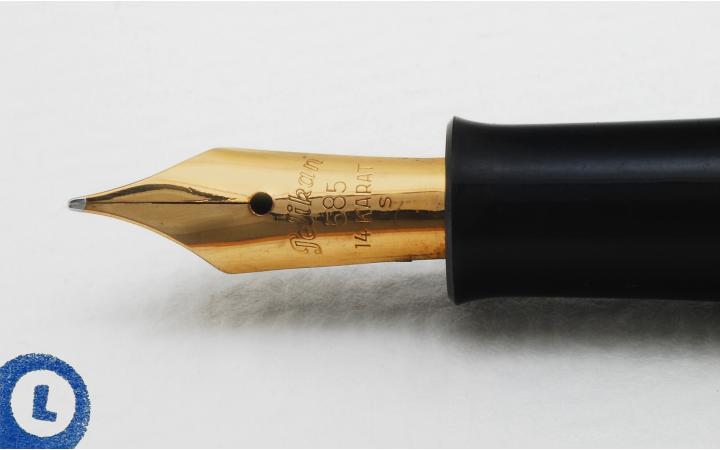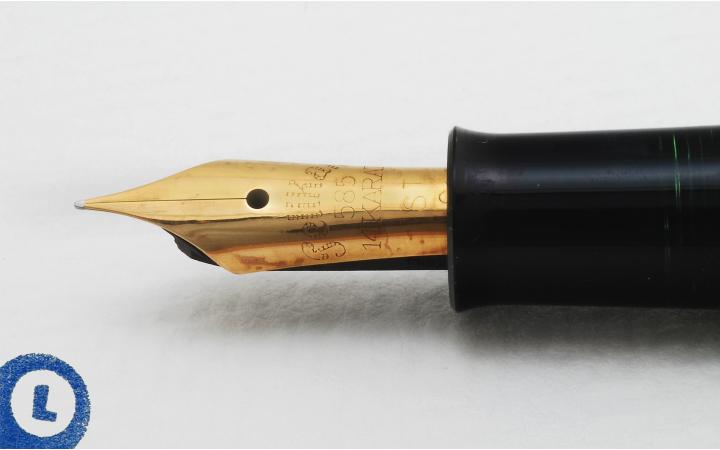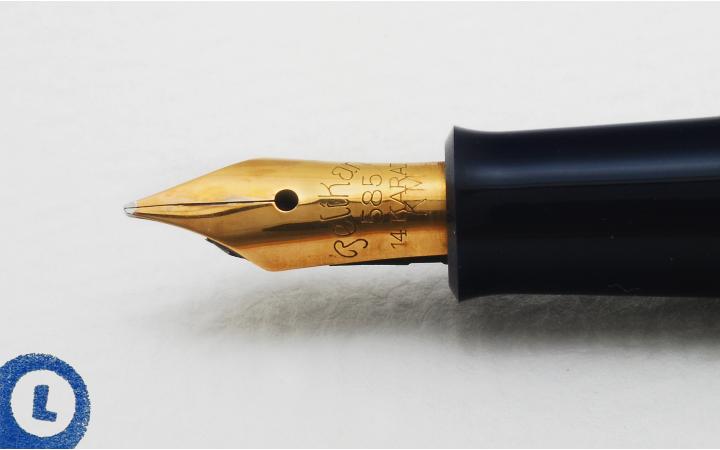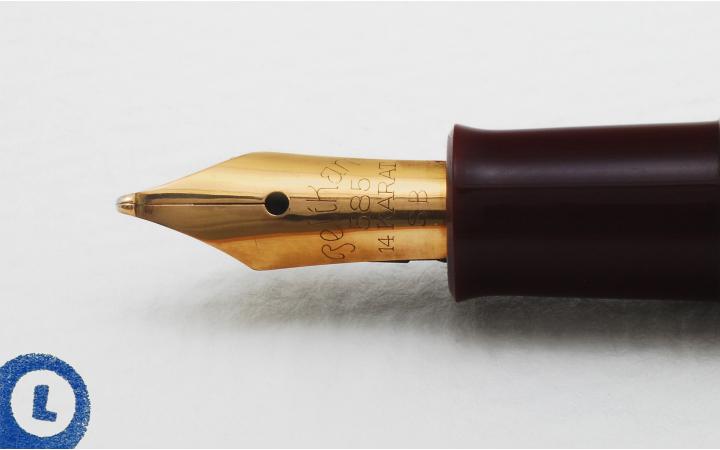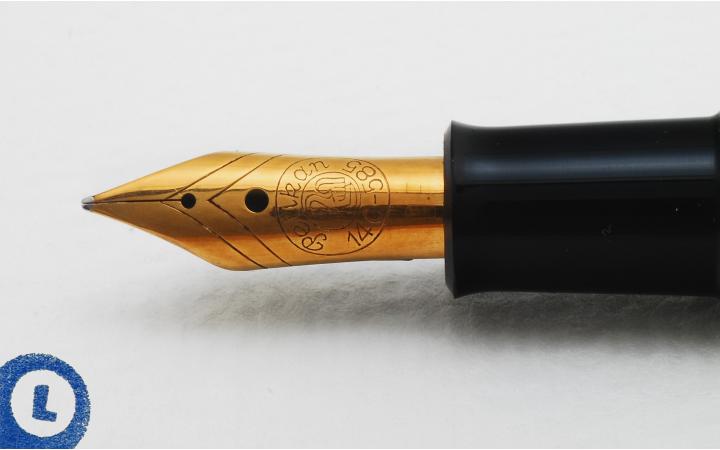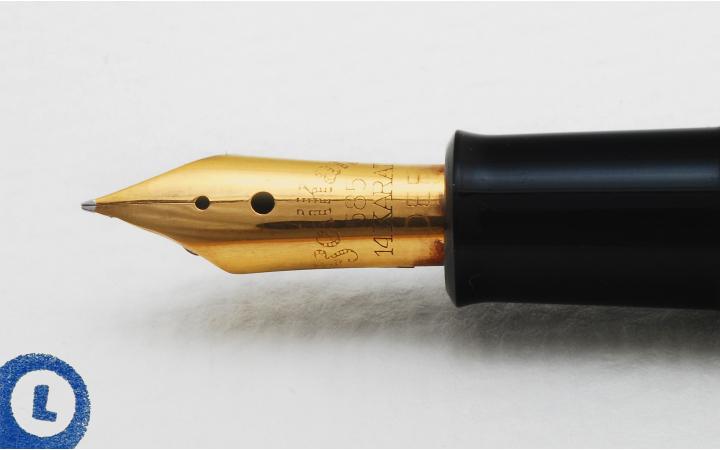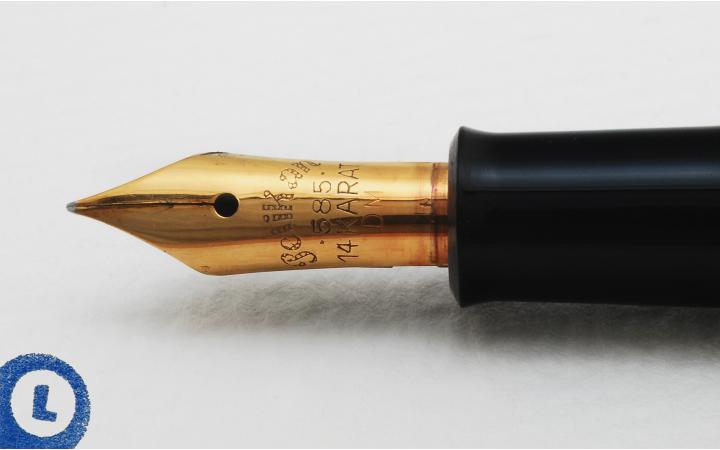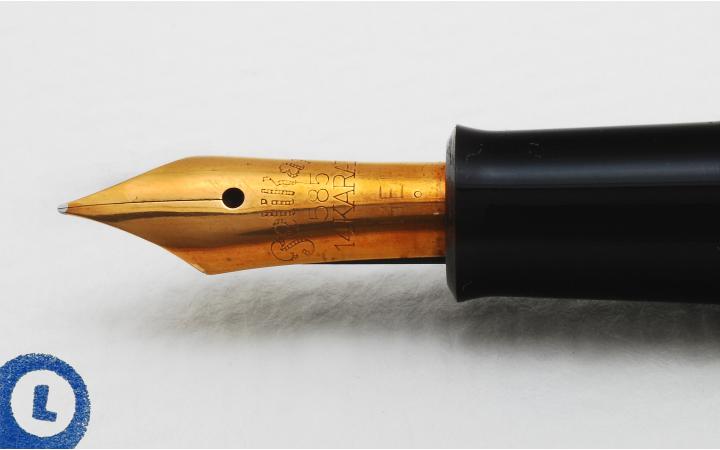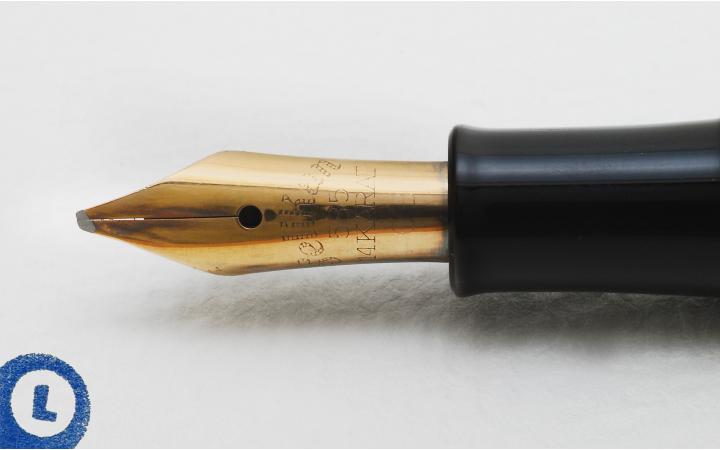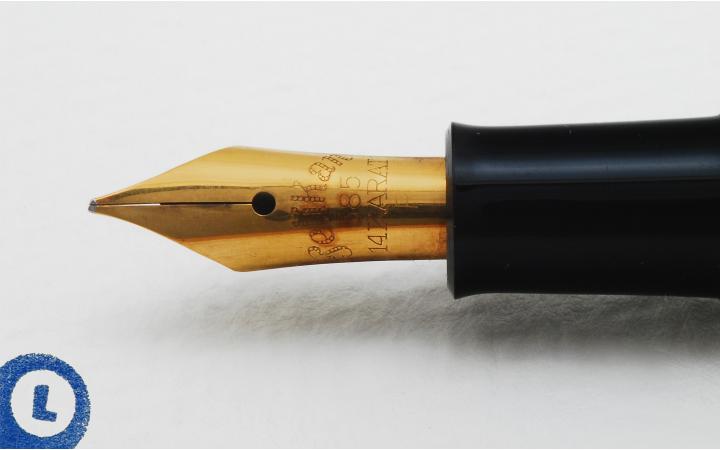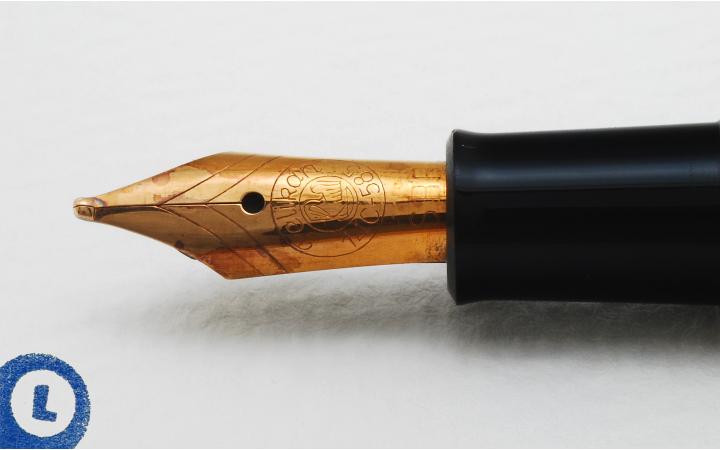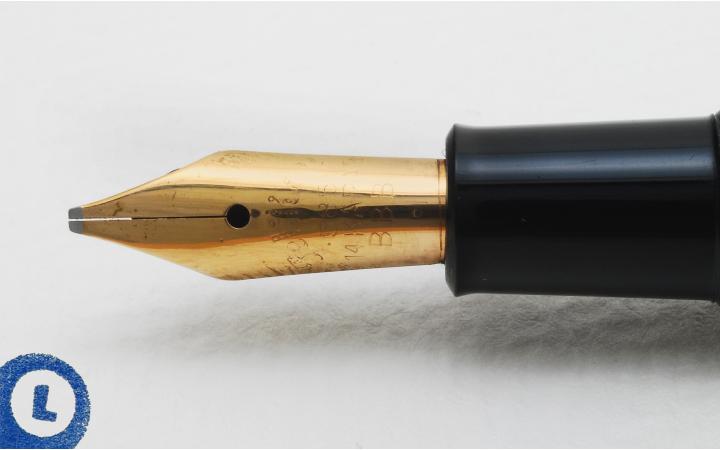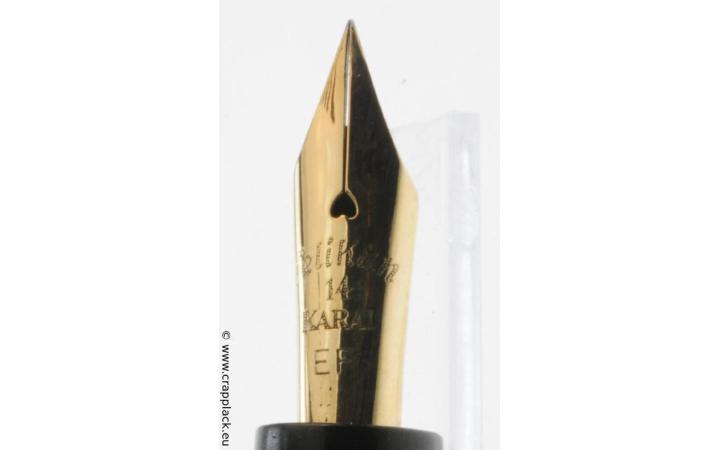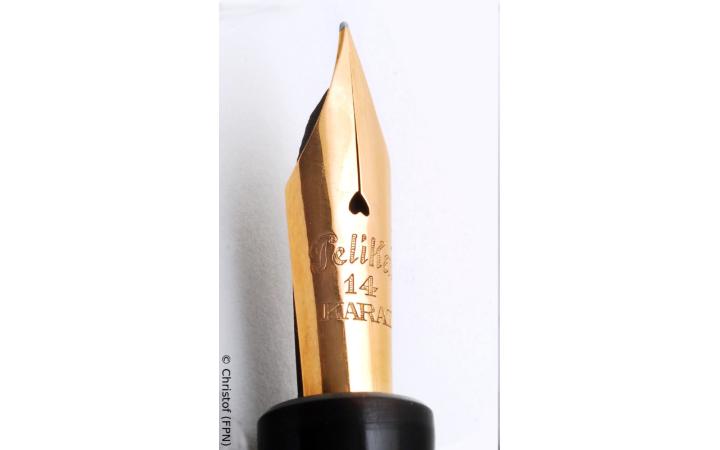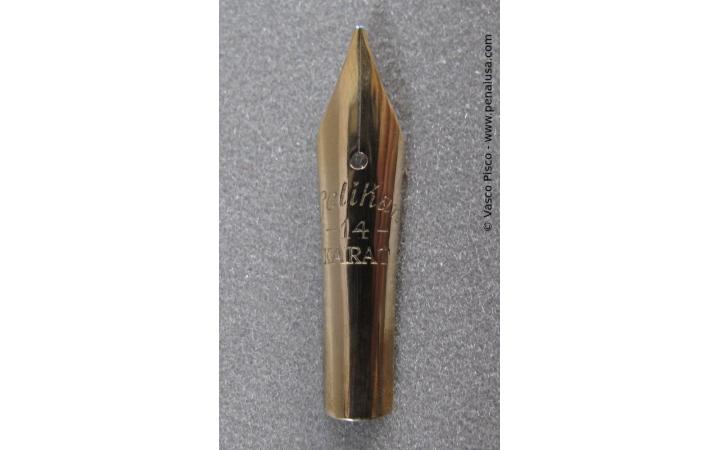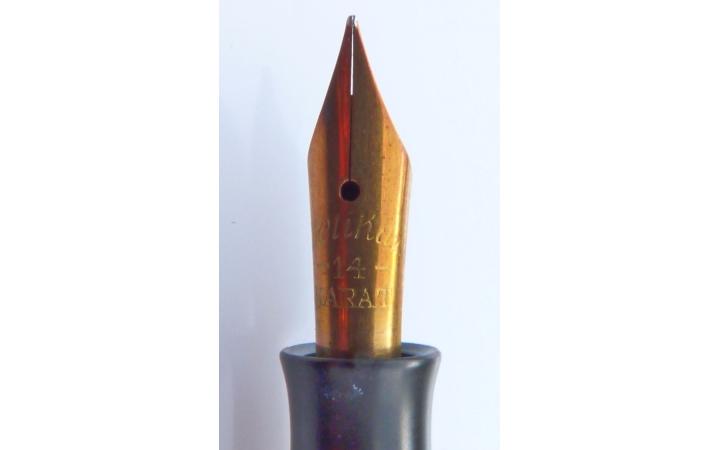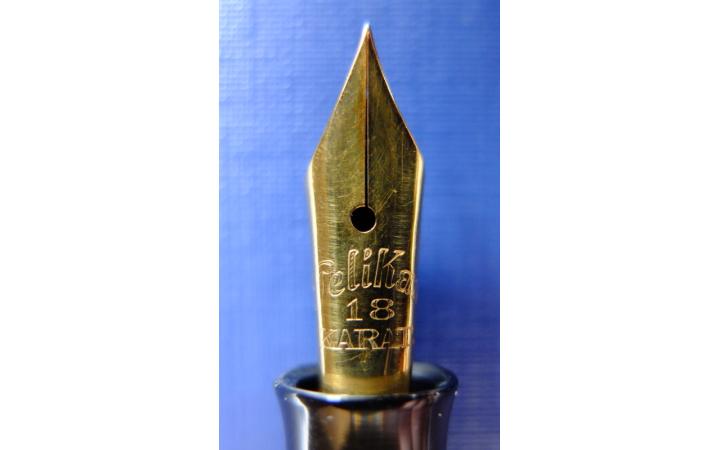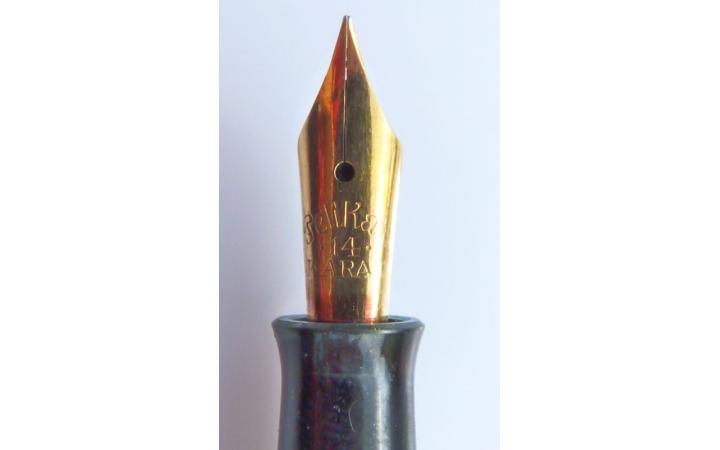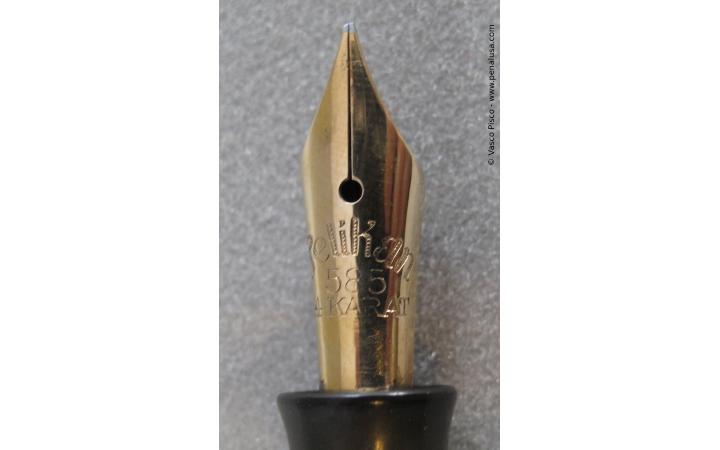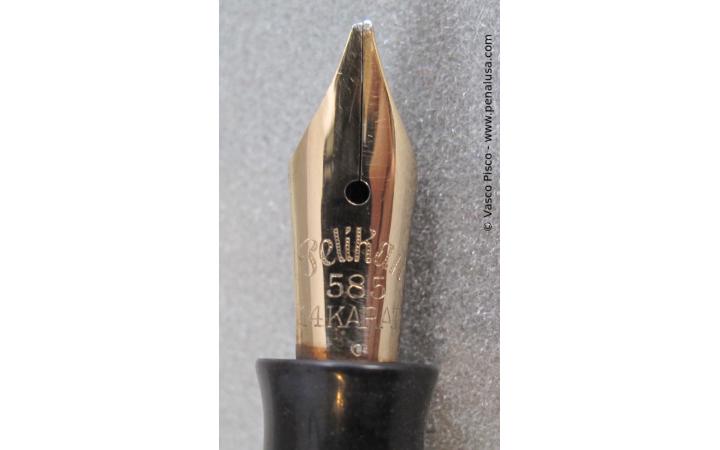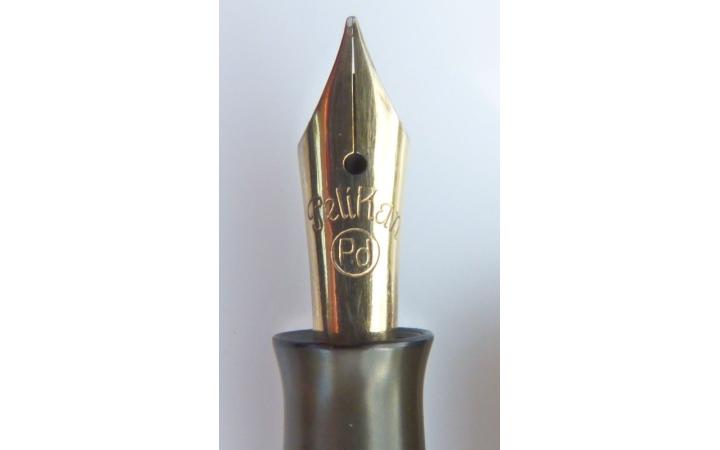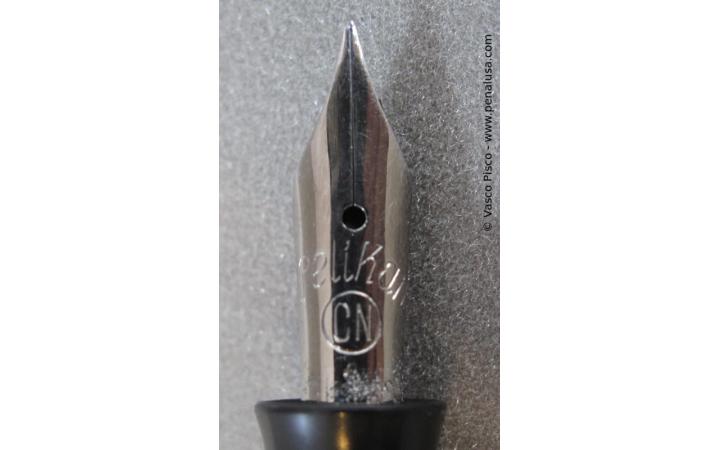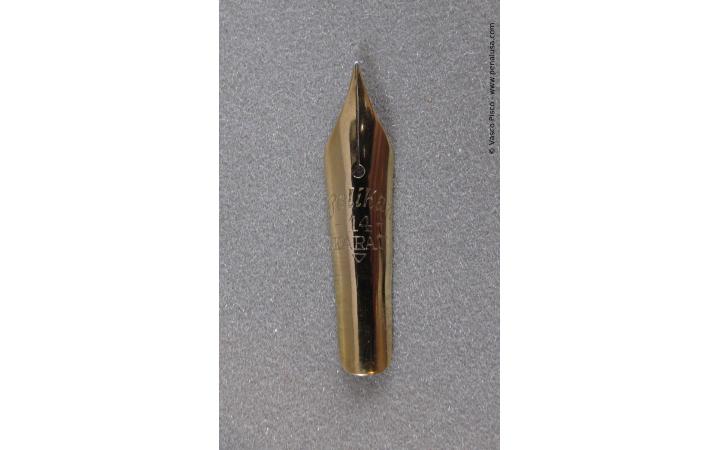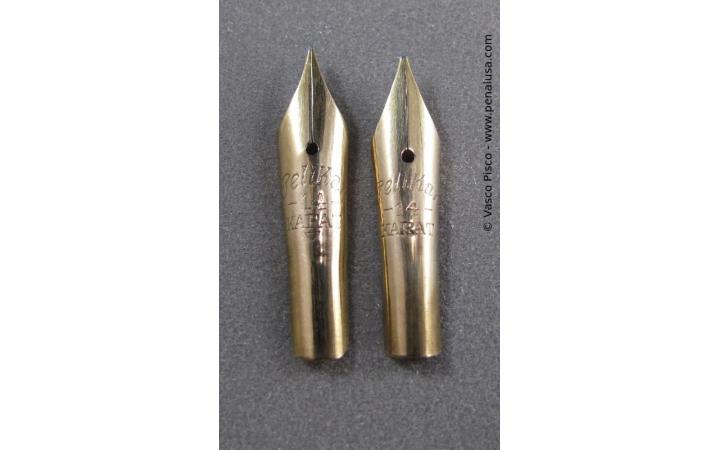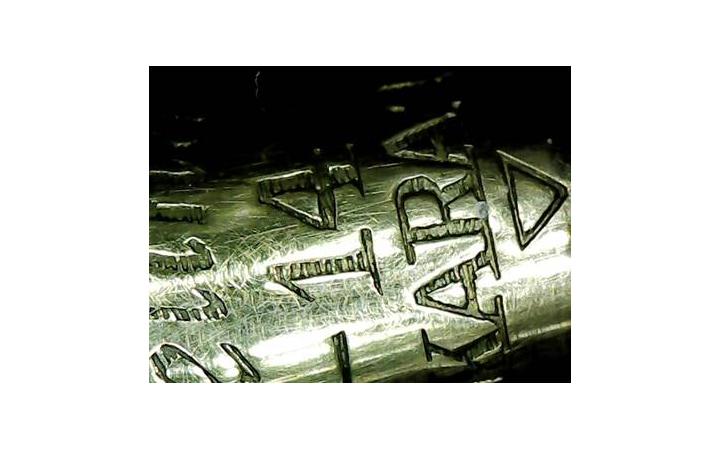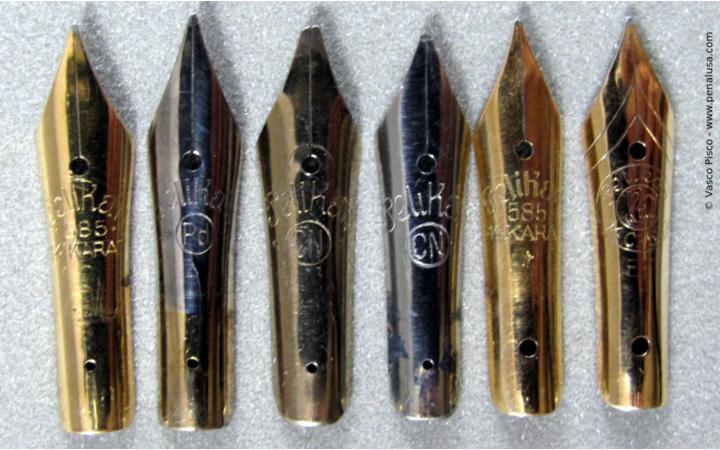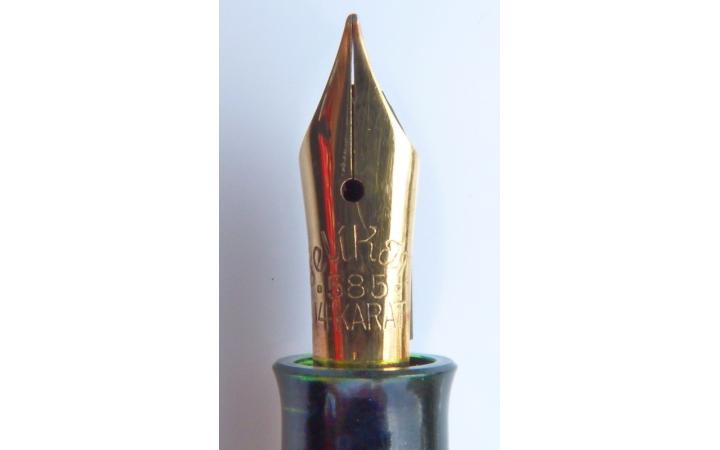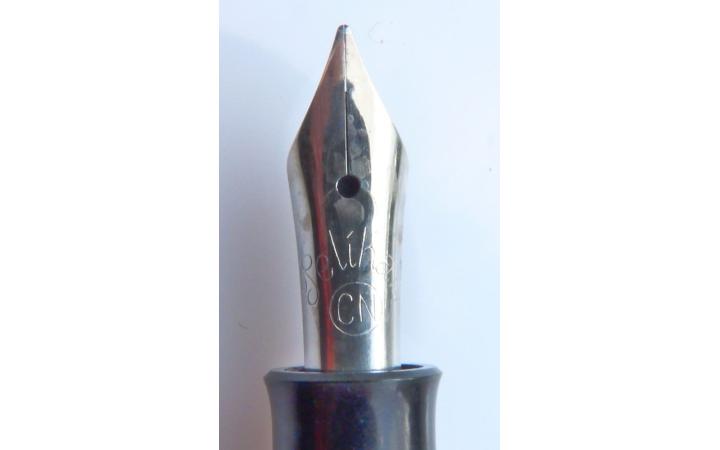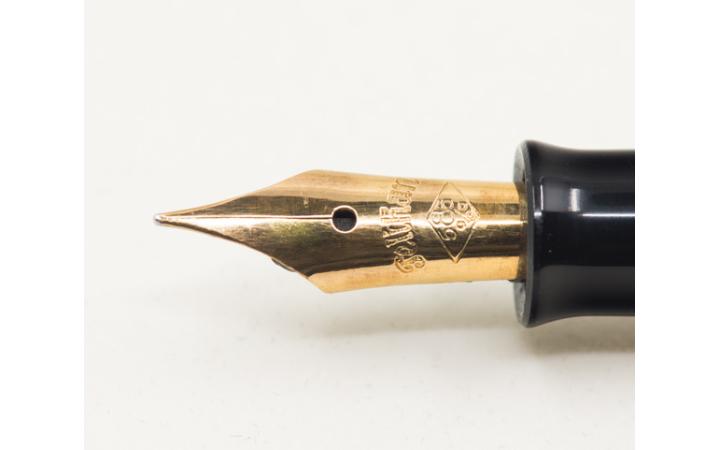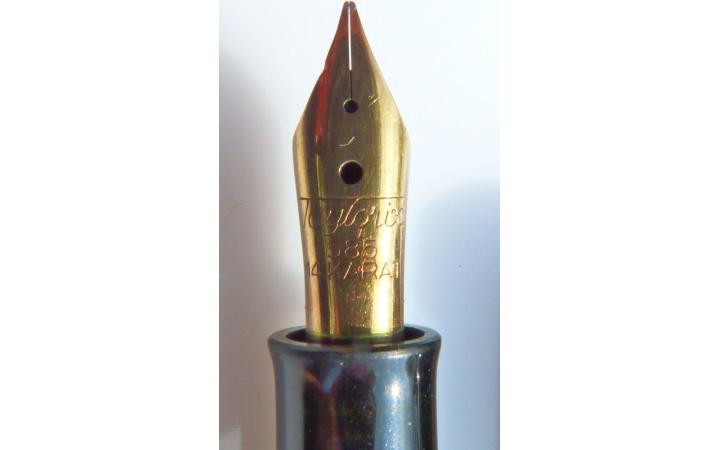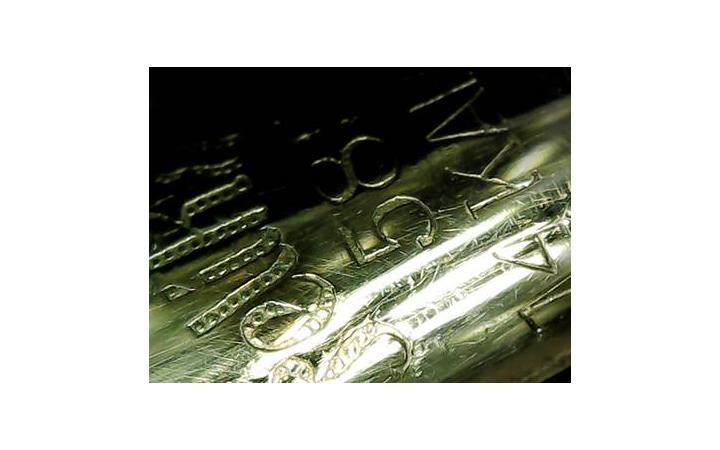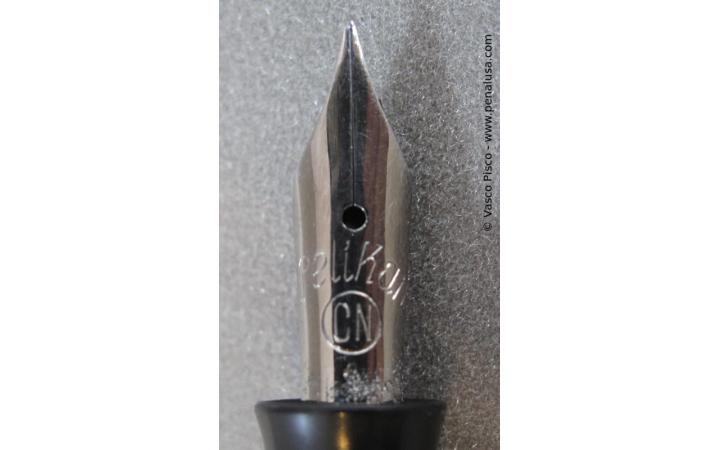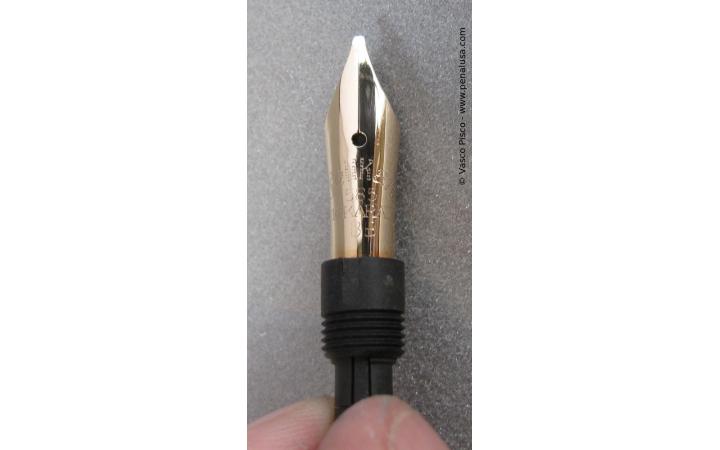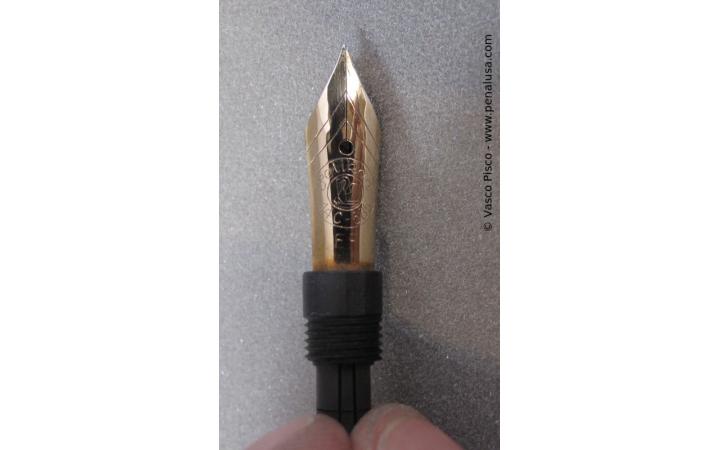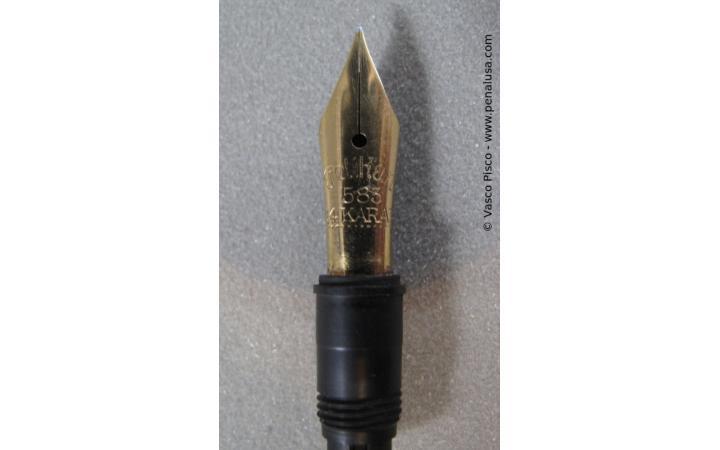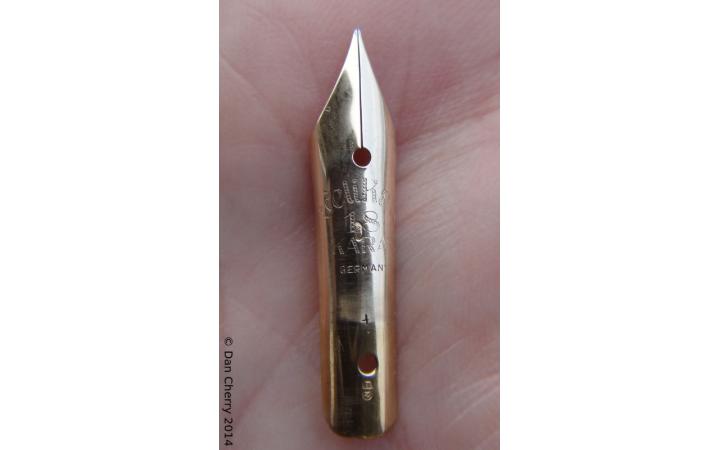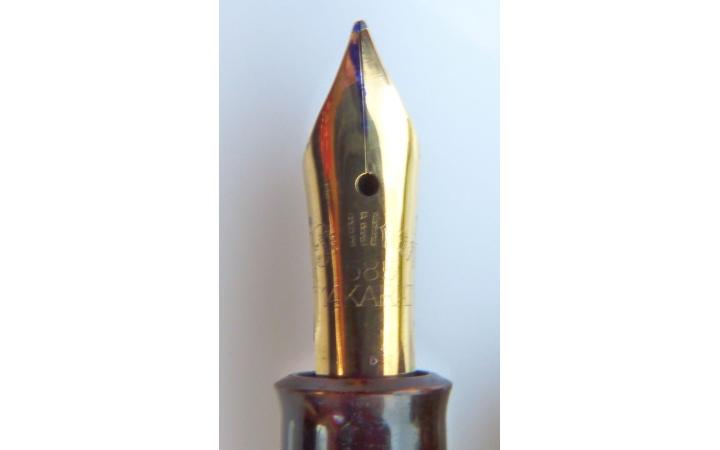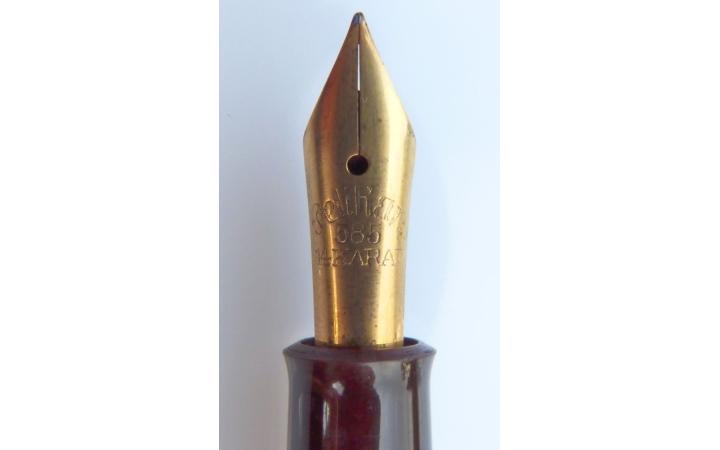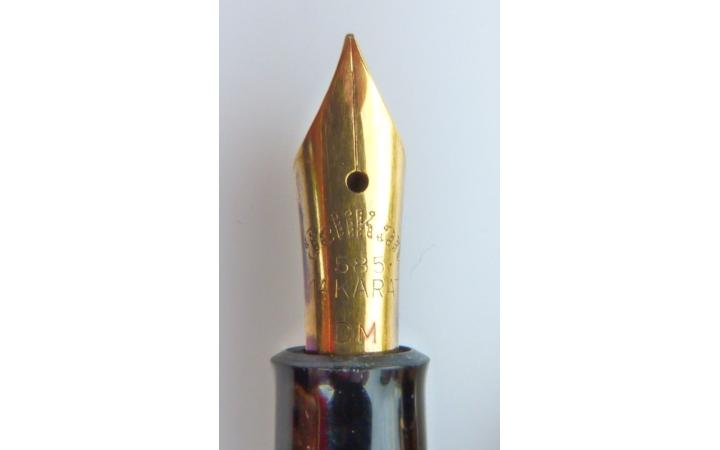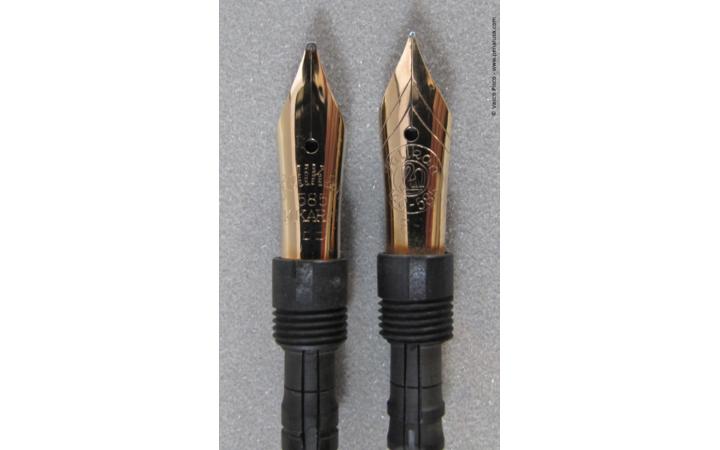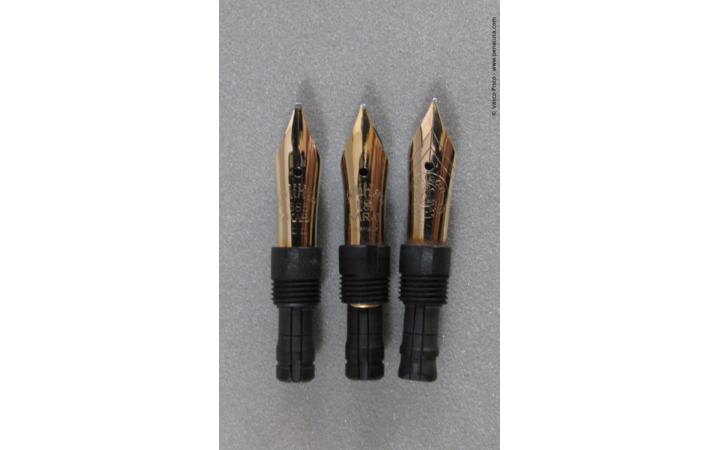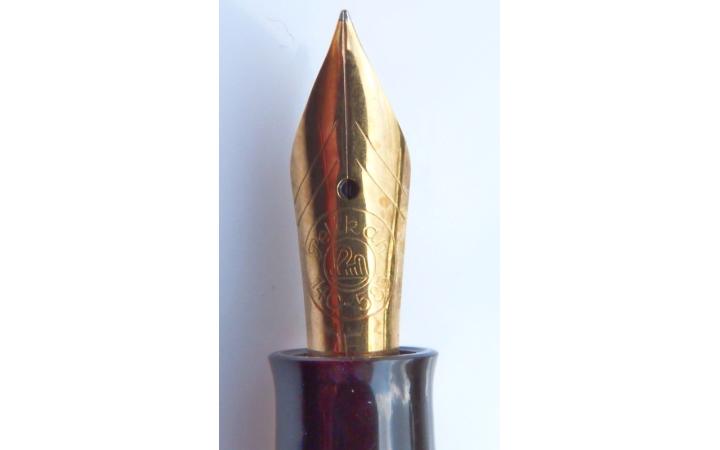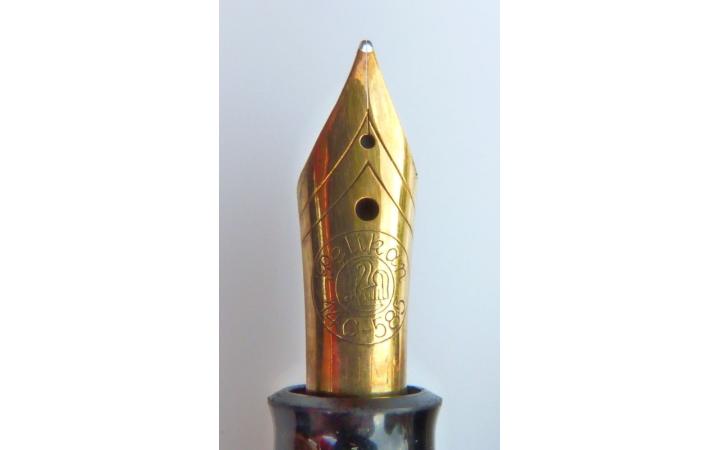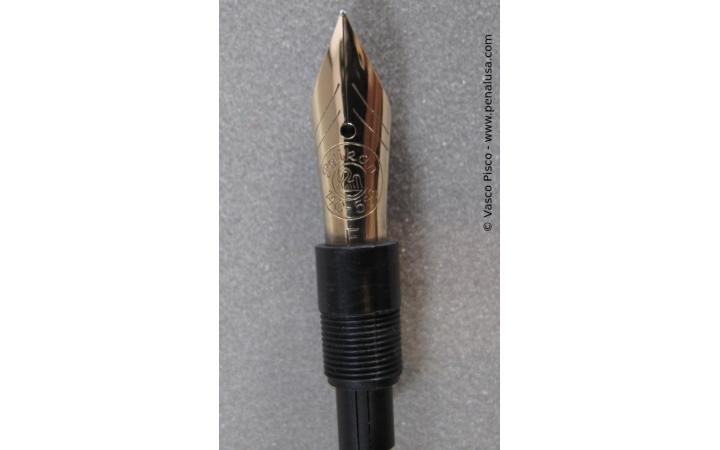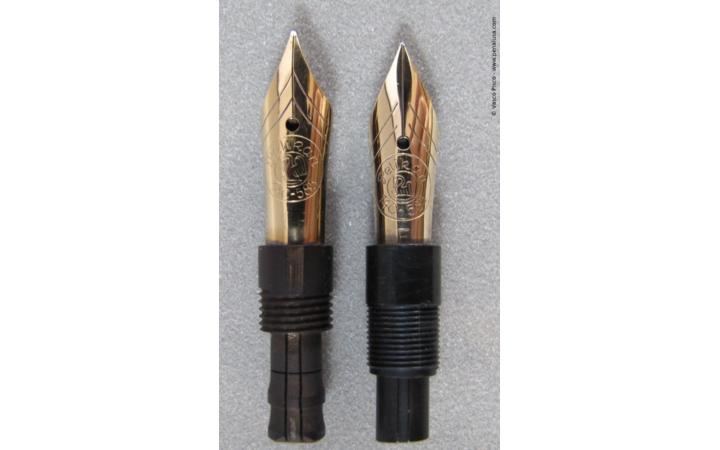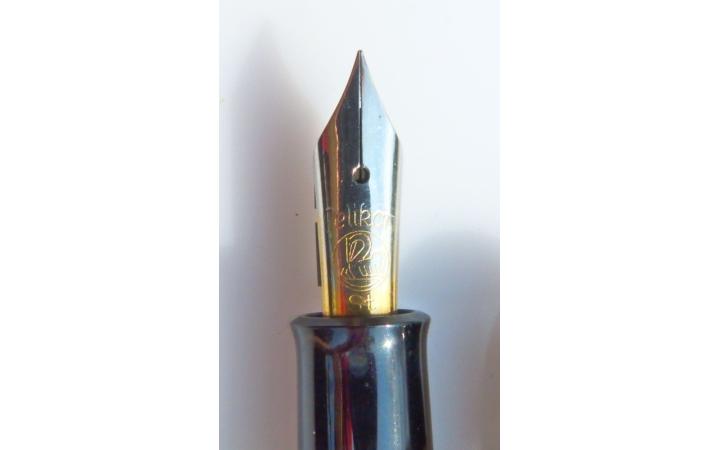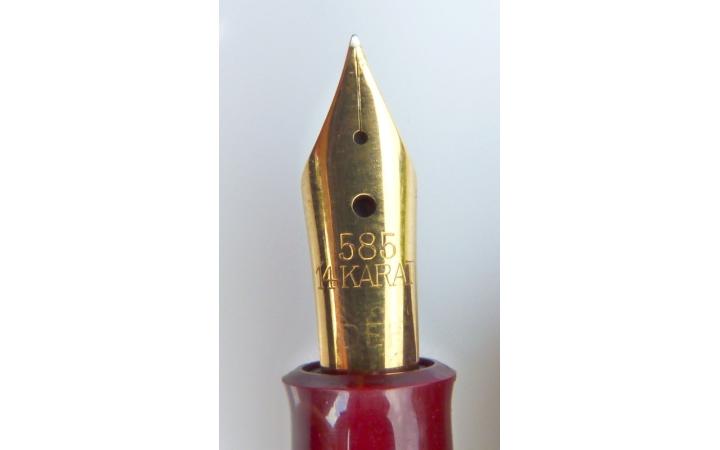Pelikan-nibs in all sizes and all tips
Various nib widths for all requirements were available. The nib could easily be replaced on Pelikan fountain pens since the nib unit was threaded. Thus a stationer could easily change the nib unit and did not have to keep complete fountain pens with various nibs in store.
The presentation of nib widths based on the Model 100 and / or 100 N, ie to the 1930s and 1940s.
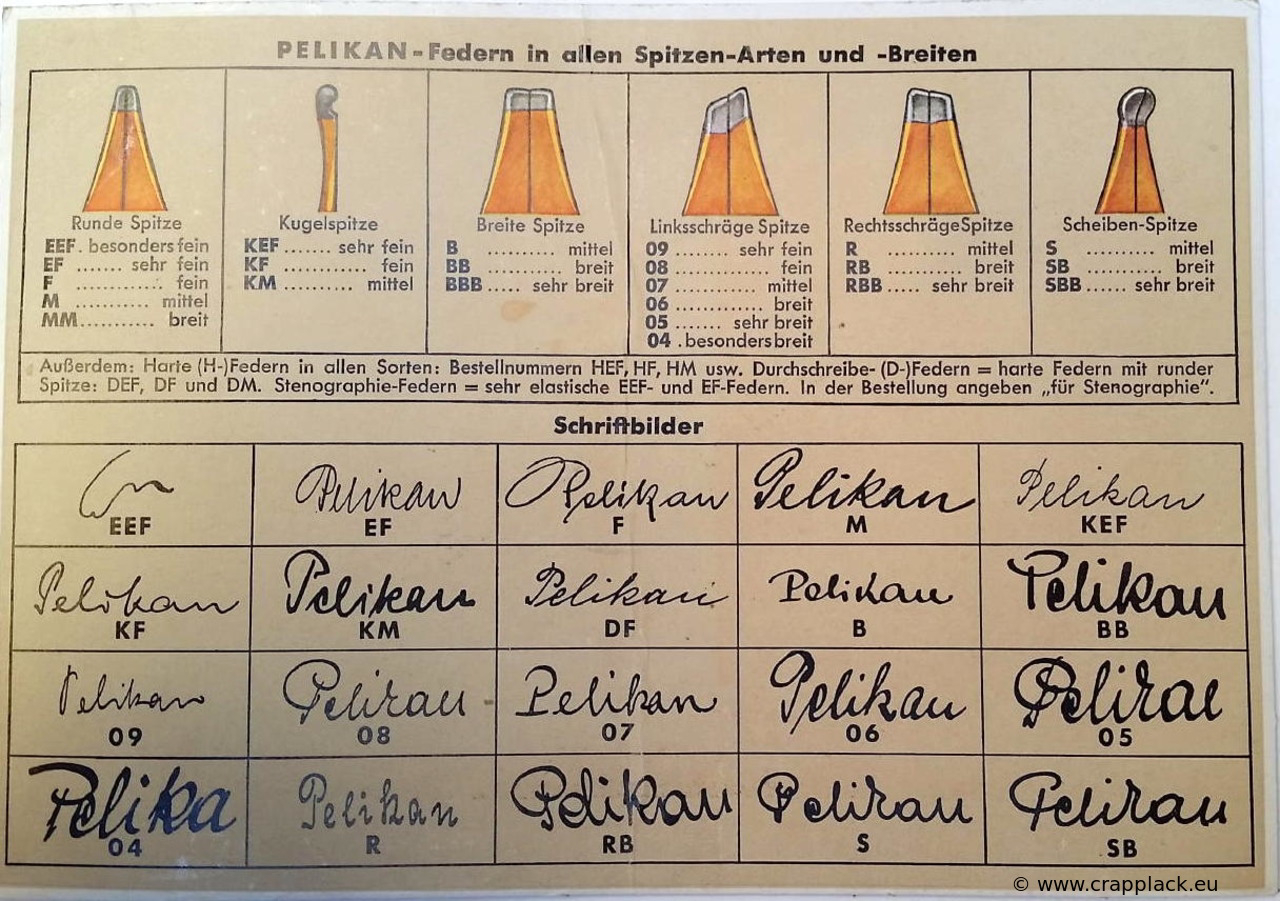
Nib sizes today
Manifold nibs were very hard, and later they had two breather holes and the slit in the nib became shorter.
Nibs for stenographers were very flexible enabling wide and narrow lines for shorthand, similar to a pencil which may produce different line width by changing pressure.
Later on, due to the writing habits of customers, for example their frequent use of ballpoint pens, nibs became harder giving a more uniform writing line with less variation.
Broad nibs in the 1960s were like today's Italic nibs and offered significant variation between the width of horizontal and vertical strokes.
The beveled or oblique nibs are intended for writers who hold the pen at an angle on the sheet. Oblique nibs have no influence on line width variations.
Since oblique nibs (OM / OB / OBB) are scratchy if held incorrectly and M or B nibs are generally easy writers compared to finer nibs, Pelikan in 2014 removed oblique nibs from their standard catalogue since demand was low.
The value of gold nibs
Often the value of gold nibs is overrated, especially at flea markets.
The gold nib of a Pelikan 100N weighs approximately 0.45 grams. The gold content is 585/1000. A nib therefore has a share of pure gold of about a quarter of a gram. The price for 1 gram of gold is about 55 euros (as of January 2023), so the gold value of a nib is about 14 euros.
Examples of common and uncommon Pelikan nibs
For a good exchange the forum The Fountain Pen Network - FPN.


